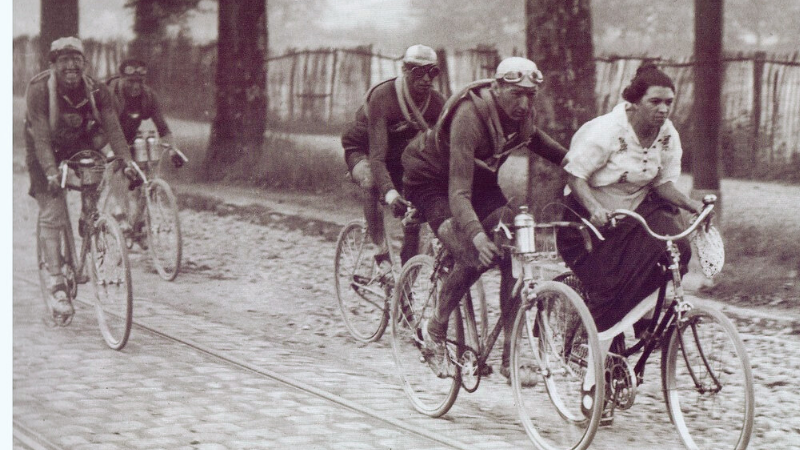One of the few things in road cycling my fascination would never cease about is how close the world of road cycling events, unlike many other sport, is to the public places of everyday life. In other words, while we go to a stadium to watch a football match or visit a sport hall to see several other sports,
road cycling events come to visit us.
You might say, there is little to wonder about it. After all, this sport called road cycling, and roads are the most common public places of everyday life. But even nowadays, in the era of meticulously planned and organized sport events, sometimes the interaction between sport and everyday life is almost so intense then it was in the early days of road cycling.
Just think about those Tour de France stages in the Alps and the Pyrenees, when cyclists meet sith free-range domestic animals.
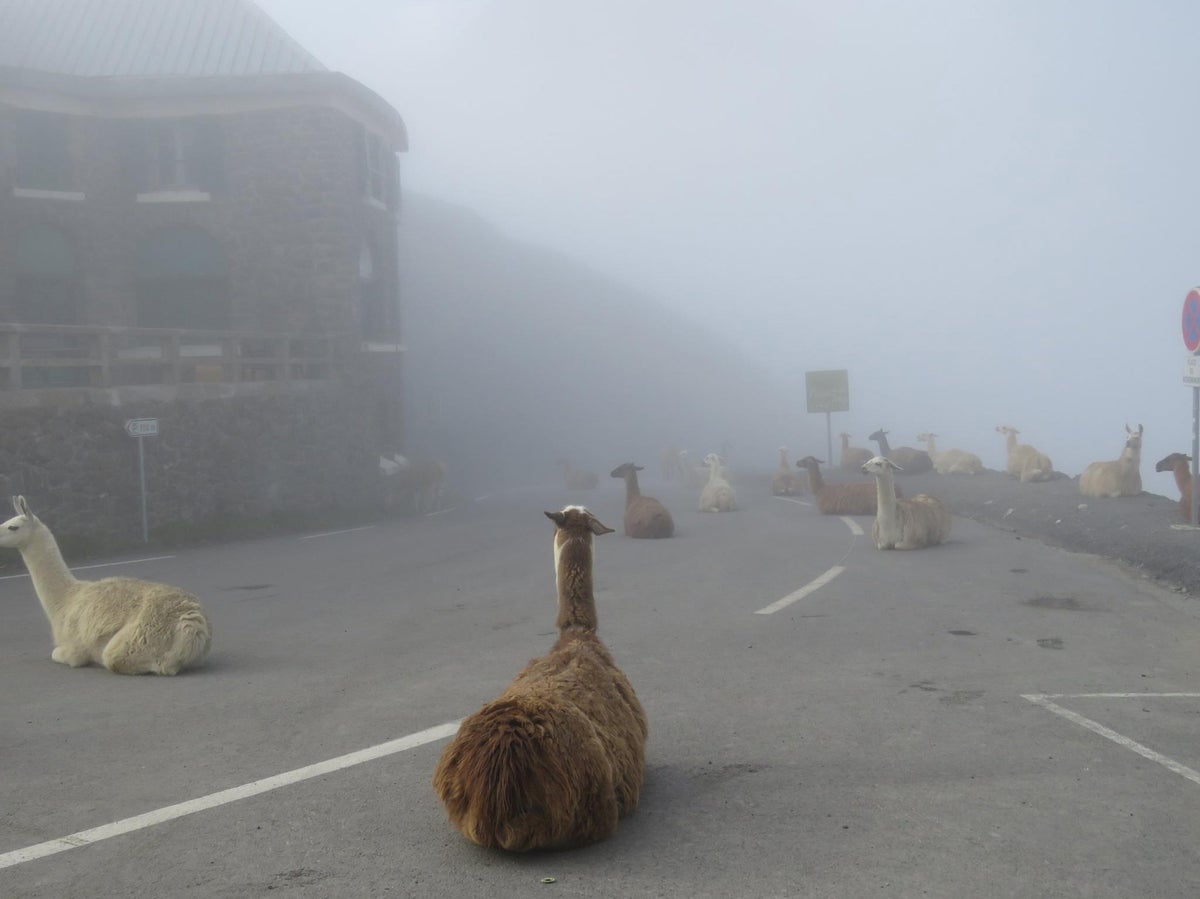
These moments with cows or, eventually with llamas are usually rather funny. But there are also more concerning moments, when drivers dismiss an important sign and drive onto the closed road with their truck. Or a careless pedestrian walks right into the peloton.
And of course there are the neverending stories with railway barriers, what created some scandalous situations in the past, like the one at the Tour de France in 1937. And I’m pretty sure that most of the readers of this post saw at least one Paris-Roubaix edition, when a smaller group of cyclists, or even the entire peloton had to stop at a closed barrier, when the TGV was arriving.
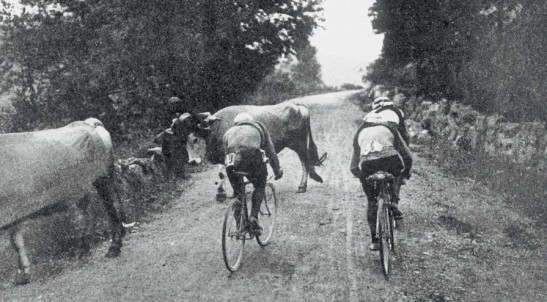
I bet you would never see something like that during a football game.1
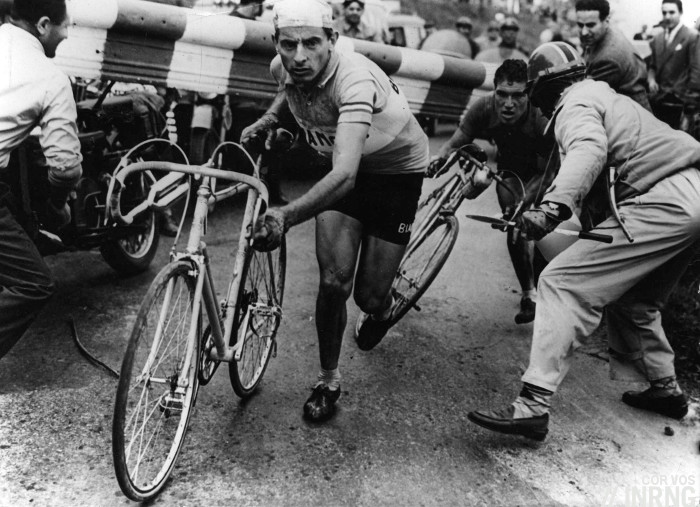
But the TGV, or any other high-speed train is a rather good example, how
road cycling races have to obey to certain circumstances, not only those ones caused by the nature, like extreme bad weather, but also situations derived from human co-existence.
And there is that contoversial type of consequences of human co-existence, when protesters are blocking the roads or try to stop a road cycling race with other methods. INevertheless, t’s not so much a new thing like you might think. Protesters already used this option four or five decades ago. Have you seen the famous documentary A Sunday in Hell? The Paris -Roubaix edition in 1976 the film was about, was interrupted by protesters too.
Road cycling meets everyday life – vintage edition
In the first part of this post I was talking about situations occasionally can happen also in our modern times. Some of them, of course, were more common back in the early days of road cycling races. On the unpaved roads of the mountains cyclists could meet both people and animals more frequently.
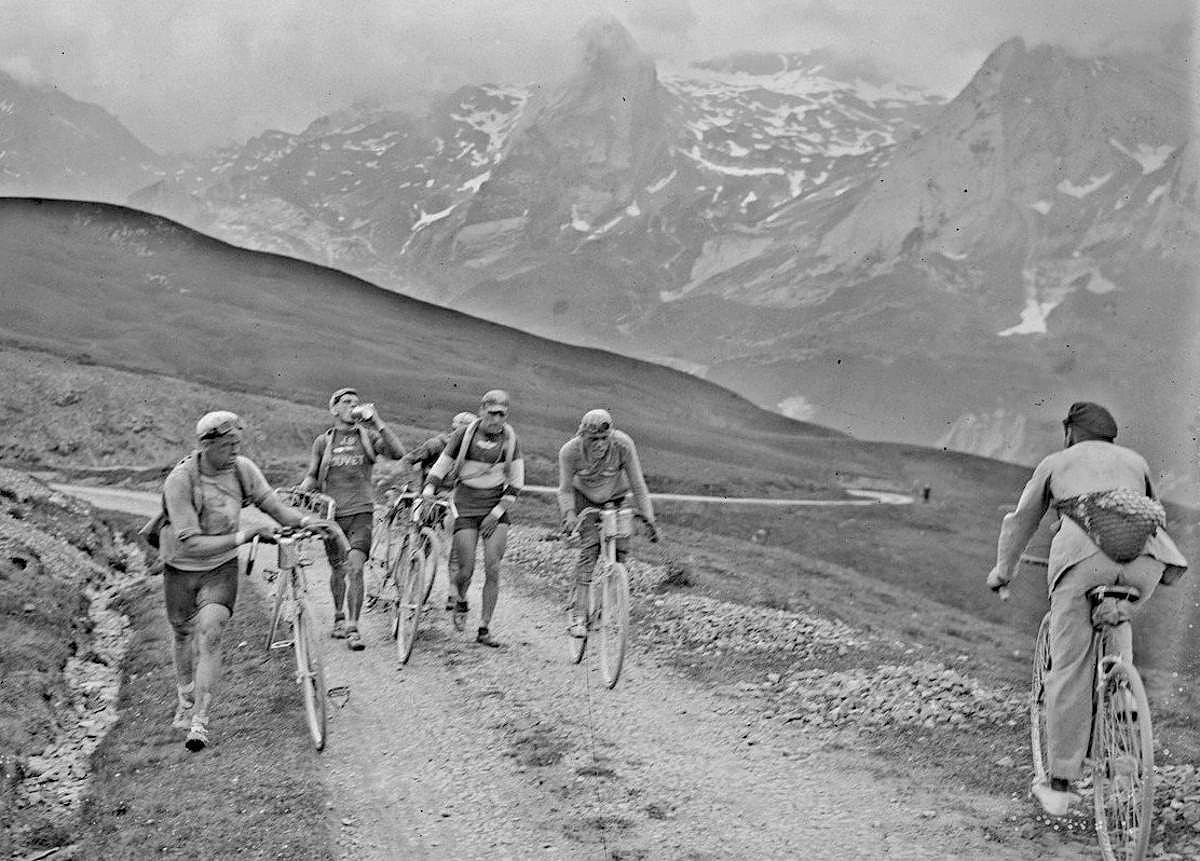
During those days when stages lasted sometimes more than 10-12 hours, and cyclists could have been all over the course, roads werent closed. It could easily happen that a local person crossed the pass on a hill towards the other way while cyclists were struggling on the road.
There is a story about Francois Faber, winner of Tour de France in 1909. On an exeptional hard day in the mountains he was kicked off from his bike by a horse. Of course, sensational sounding race reports from the early days of Tour de France are rather regarded as unreliable narratives (after all, the purpose of them was to increase the selling numbers of newspaper sponsoring cycling events), but still it sounds quite possible. Therefore the story has its wel- deserved place in the myth of this sport.
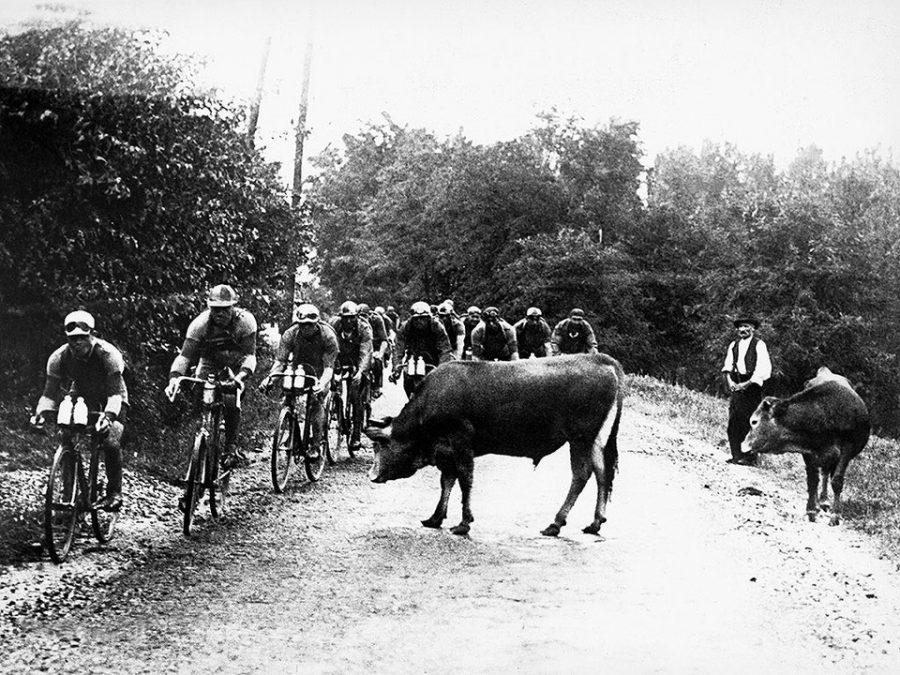
Organizing a cycling event 100-120 years ago was different in so many ways. This, of course,
created different forms of interaction between road cycling and everyday life.
For example cafés and taverns served as checkpoints and feed zones. This is one of my favourite parts of this topic. In a post on my Patreon page I emphasised my views on road cycling history being not just a collection of results and fact with a symbolic scene about spectators and participants of a road cycling race are sitting next to each other in a crowxed café.
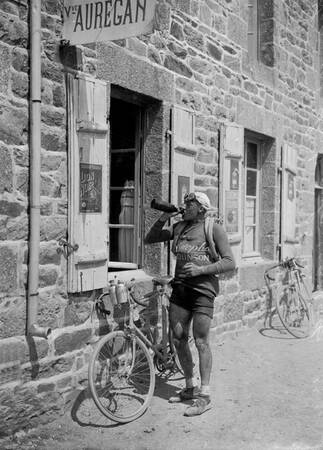
But wait! There is more!
The sixts edition of Giro d’Italia (1914) is considered the hardest edition ever. Partially, because only eight riders were able to finish it. The weather was exremely bad, like in January or February. Many riders abandoned the race already during or after the first stage. The last contestant, a 19 years young boy, called Mario Marangoni arrived more than 7 hours later than the winner of the stage.
This was the era, when independent riders had to take care of their accomodation themselves. At the end of an inhumanly exhausting day he still had to find a place where to sleep. It was quite often that riders on low budget found shelter in sheds and barns of locals.
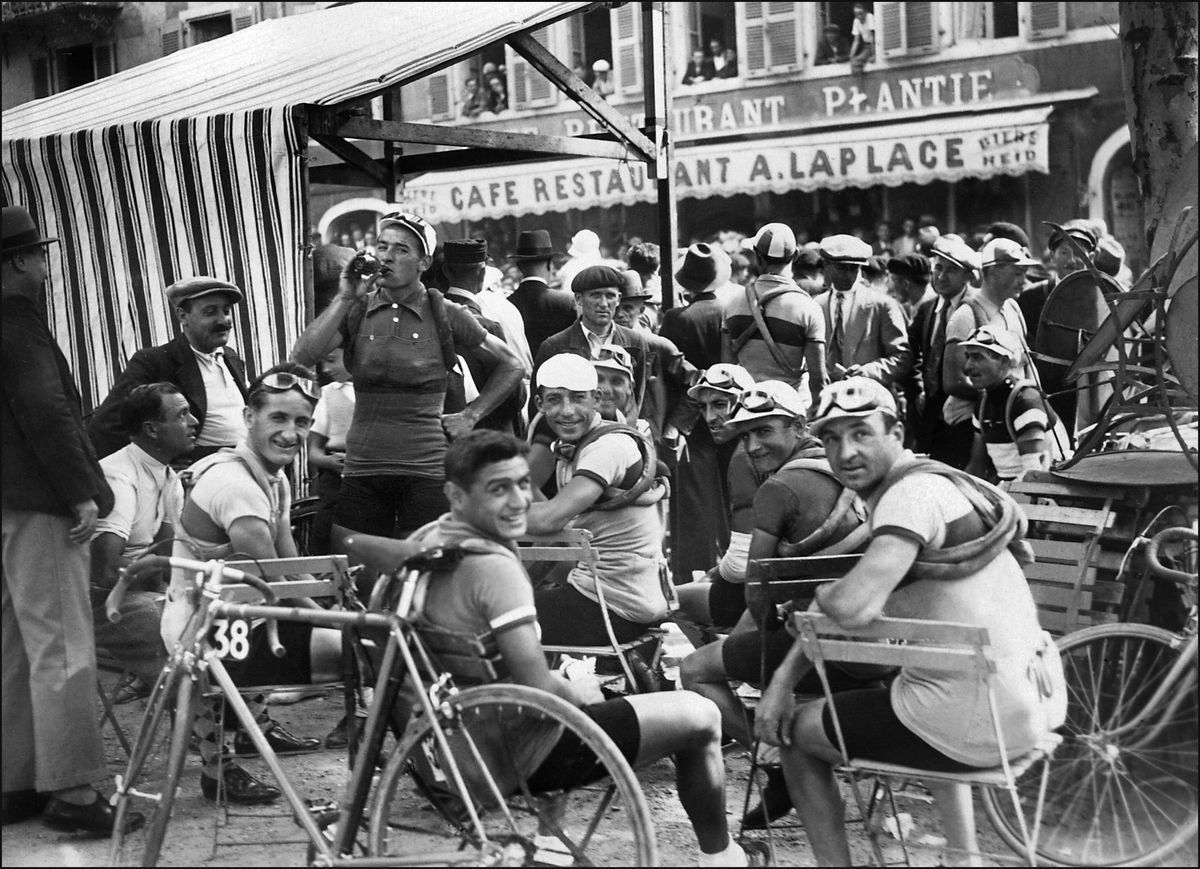
A bit different story happened with Giuseppe Azzini, winner of the 3rd stage. On the next day, with 30 km to go, he just dissapeared in the terrible weather. He was found in a barn on the next day, feverish and totally disoriented. Not only because of the exhasution, but possibly as consequences of drug (cocaine) usage, which was a common thing in the dawn of the sport.
Finding shelter under the roof of the local people was usually last resort during the extreme hard days in the Pyrenees at Tour de France, like it happened on the hardest ever day of the race.
Just imagine the face of those locals when these obsessed chasers of superhuman performances with the feeling of being totally defeated were grateful for some warm food and drink in a warm room!
Just to add another kind of interaction between competing cyclists and people living their everyday life.
Appendix: the devastation of war
Although war is not exactly what we consider as part of everyday life, it has still a huge impact on road cycling races.
When the road are filled with tanks, there is no place for cycling races. Also when the war is over, the devastation is still left behind. Nature, people and places build by people are healing slowly.
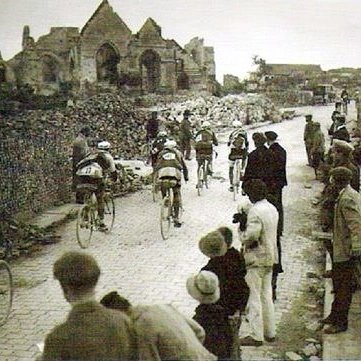
The devastation of World War I was the reason behind of the birth one of the greatest myths of this sport. After the destruction of figtings for more than four years the North-Eastern part of France was totally ruined. In early 1919 organizers of Paris-Roubaix alongside with cyclists and journalists took a reckon of the possible route of the race.
When they saw the level of devastation, one of the journalists said, it’s looks like hell.
And the catch phrase “Hell of the North,” was born.
As you can see, the topic of road cycling meets everyday life is quite diverse, reaches many fields of history and also our modern time. I intend to cover most of them on my Patreon page.
And if you would like to read here on PelotonTales more longer and essayistic posts like this one, please consider a small donation.
Thank you for your support!
- Actually, you would. There is a small countryside stadium in Slovakia, where a railway goes alongside the pitch. Images of a match (not) disrupted by an arriving train went viral a few years ago, you would find more information about it easily. [↩]
